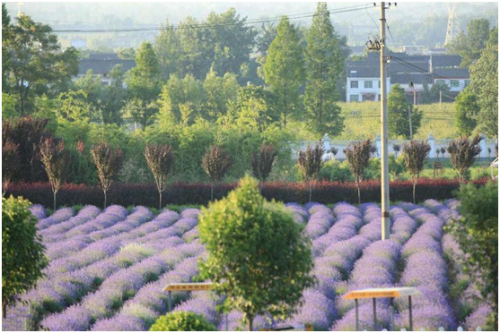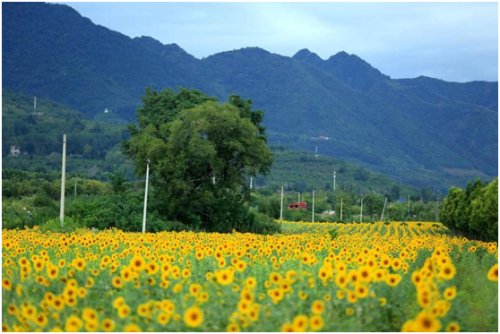Qinling National Botanical Garden

Qinling National Botanical Garden is scheduled to open on October 1, 2017. With a planning area of 639 square kilometers (247 square miles), it will be the world’s largest botanical garden. Located in the north slope of Qinling Mountains, the “biological gene bank” of China and with an altitude variation of over 2,500 meters (8,200 feet), it will also be the botanical garden with the most diversified plants and clearest vegetation zones all over the world. Qinling Botanical National Garden is located in Zhouzhi County, about 70 kilometers (43 miles) south of downtown Xi’an. Following are some main spots to be opened:

Mulberry Garden
Covering an area of 2.6 acres, this zone with countryside atmosphere mainly cultivates mulberry trees, fig trees, paper mulberries and other moraceae plants. The best time for a visit is late spring to early summer from May to middle June. In addition to plants appreciation, visitors can pick mulberries by themselves at that time.
Orchid Garden
It is a specialized park in Qinling National Botanical Garden mainly to exhibit dendrobium and orchids, with a plant coverage rate of 70%. Dendrobium is a kind of most valued Chinese herb medicines while orchids with special fragrant have been favored by Chinese literati for long. The park combining grass and flower together is in a courtyard style. The orchid grows under the trees and in the grass, which is suitable for taking photos or sightseeing all over the year.
Rock Plant Garden
This park is a shrubland mainly cultivating Chinese wolfberry and pseudo-ginseng and also growing some pine and cypress. The plant coverage is over 80%. Rock plants usually grow in the rock cracks, on the rocks, or on the thin layer of earth on rocks. They do not like water, so advanced drainage system has been built in this zone. It is better to pay a visit in spring and summer from March to August.
Gingko Garden
Numerous ginkgo trees are cultivated in this zone and they cover about 90% of the area. The ginkgo tree is a kind of world-famous ancient living fossil plant. In November, the area is dyed golden yellow, which is very impressive.
Peony Garden
More than 100 varieties of peonies are collected in this area measuring 2.7 acres in the Qinling National Botanical Garden. The rate of peony coverage is 60%. Visitor can admire the colorful peony bloom from April to early May.
Aquatic Plants Garden
It is filled with wetland plants of more than 200 kinds, including royal water lily, lotus and Iris tectorum. It is suitable for a visit in summer from June to August.
Greenhouse Hall
There are about 5,000 kinds of plants collected in this hall of 3.6 acres. It is divided into five zones –Tropical Rainforest Zone, Dwarf Plant Zone, Aquatic Plant Zone, Desert Plant Zone and Leisure Zone. It is a large leading base for both science education and sightseeing in China.
Paleontology Hall
It is a world-class science hall covering a wide area of 7.4 acres. It is creatively designed to imitate the appearance and size of paleontological plants and their living environment. Visitors can admire the living scenes thousands of years ago with the help of advanced technologies like sound, light, and electricity, etc.
World Expo Hall
The World Expo Hall in Qinling National Botanical Garden is a special region to show national flowers and garden styles of many countries.

How to get to Qinling National Botanical Garden
Take Huan Shan Tour Bus No. 1 from the North Square of Big Wild Goose Pagoda during 07:00 and 14:00 and get off at Caishen Guli Station. A one-way ticket costs CNY 12.
Opening hours:
8:30-17:30 (March 16-October 31)
9:00-17:00 (November 1st-March 15th)
Ticket Price
March 1 - November 30: CNY 70
December 1 - end of February: CNY 50


